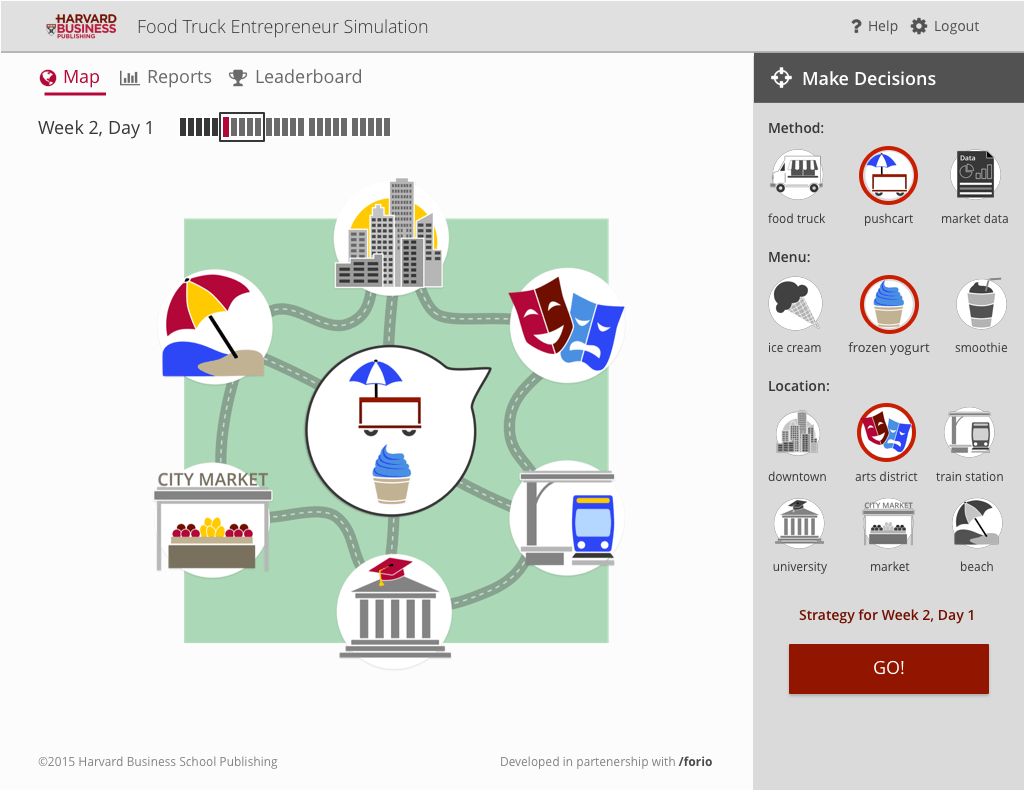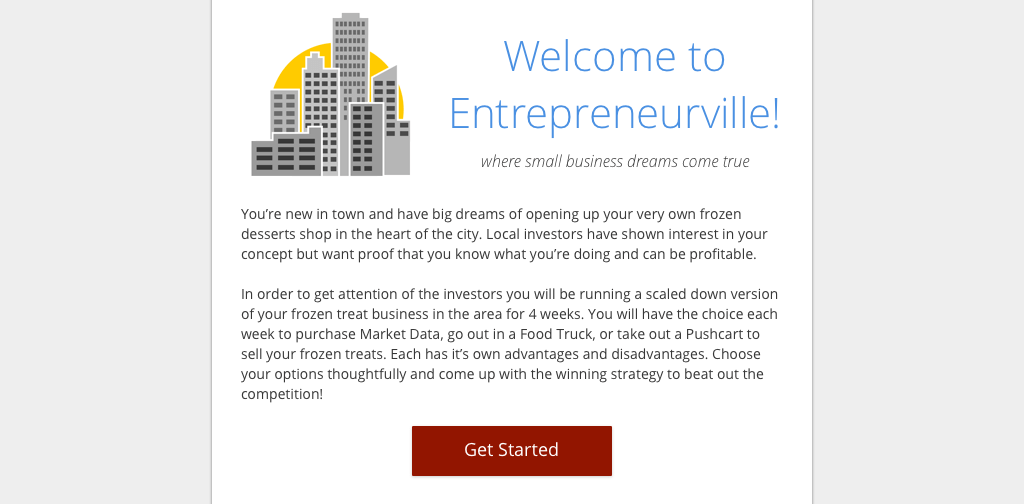Professor Michael Roberto, author of the award-winning Everest simulation, presented us with the concept for the Food Truck Challenge. He wanted a simple, effective simulation that would teach the concept of minimum viable product (“MVP”) to students in a short, engaging, and easily repeatable format.
This idea was a departure from many of our other popular Harvard Business School Publishing simulations, which are typically meant to run for an entire class period or over several days. Professor Roberto wanted an exercise that could be run in 30 minutes or less, while still providing the impact of a longer, more complex simulation.



 Get this simulation in our store.
Get this simulation in our store.